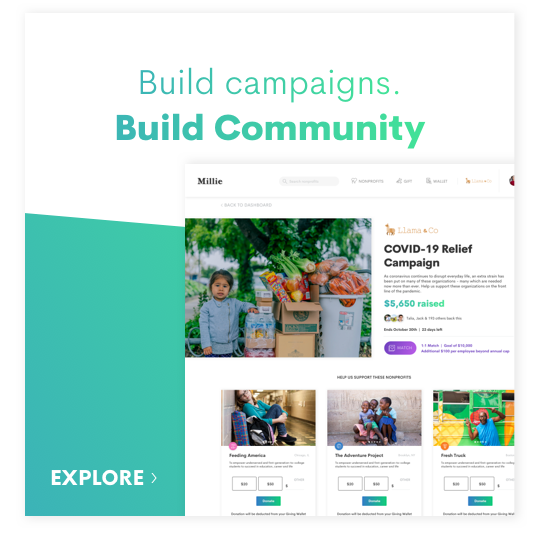The role of business in society is evolving – and was evolving even before COVID-19 forced companies to pivot how they engage with customers, employees and other stakeholders. How people view their relationships with work and the brands they support is changing. Sustainable Brands’ recent report, Enabling the Good Life, found that across generations people are looking for simple, more balanced lives with meaningful connections to people, communities and the environment.
Having a business model that prioritizes social responsibility, equity and inclusion, and sustainability will win favor with prospective customers and employees alike. So how should a company start to implement these programs and policies when there are so many worthwhile causes? By starting with their core values. ✨
Let’s look at LEGO as an example. LEGO’s mission is to “inspire and develop the builders of tomorrow,” which is guided by values like imagination, creativity, fun, learning, caring, and quality.
Having a well-articulated mission and set of values gives LEGO the ability to assess what sort of commitments it can and should make as a brand. In this case, LEGO has made four key promises:
People Promise 🧑🏽🤝🧑🏽 LEGO cares deeply about the people who are part of making LEGO possible, and is committed to upholding human rights and ensuring safe, healthy and respectful workplaces for our employees. This is huge – people who view their employers as good corporate citizens feel a higher sense of engagement and are more committed to their employer.
Play Promise 🧰 The company recognizes the vital role of play in a child’s development. LEGO has a unique opportunity to help children problem solve, be creative and develop resilience.
Planet Promise 🌎 LEGO is designed for children – children who will one day inherit the planet. LEGO’s promise to minimize the environmental impact of its operations not only demonstrates caring for children who love LEGO, but also the core values of creativity and quality by implementing more sustainable practices.
Partner Promise 🤝🏼 A critical component of any corporate social responsibility strategy is thinking about stakeholders beyond shareholders or investors. LEGO understands the importance of building partnerships with stakeholders like customers and suppliers in being a better corporate citizen.
These promises are embodiments of LEGO’s core values and offer a framework for how LEGO engages with stakeholders from employees and customers to the environment. This is also reflected in the three pillars of LEGO’s corporate social responsibility: children, environment and people. It’s easy to see the connection between these pillars and the brand promises LEGO has made.
Focusing on core values also gives companies the ability to evolve what CSR looks like over time. As employee and customer needs and expectations change, taking a values-based leadership approach offers greater ability to respond. LEGO’s core products are the classic bricks many of us know and love, but LEGO has more recently ventured into digital play offerings. While digital play offers children new ways to engage with the LEGO brand, there are also risks with giving children access to mobile devices. LEGO responded to this risk by taking a values-led approach – the brand’s digital experience prioritizes child safety. Beyond that, LEGO joined forces with UNICEF to develop an industry-first Digital Child Safety Policy. LEGO even helped create a tool called the ‘Child Safety Online Assessment’ to help other companies understand and address children’s rights online.
For any corporate social responsibility program to be successful, it has to be authentic to the business’ culture and principles. LEGO is just one example of walking the talk of values-aligned corporate social responsibility. We’re excited to see how even more businesses implement these types of initiatives!



